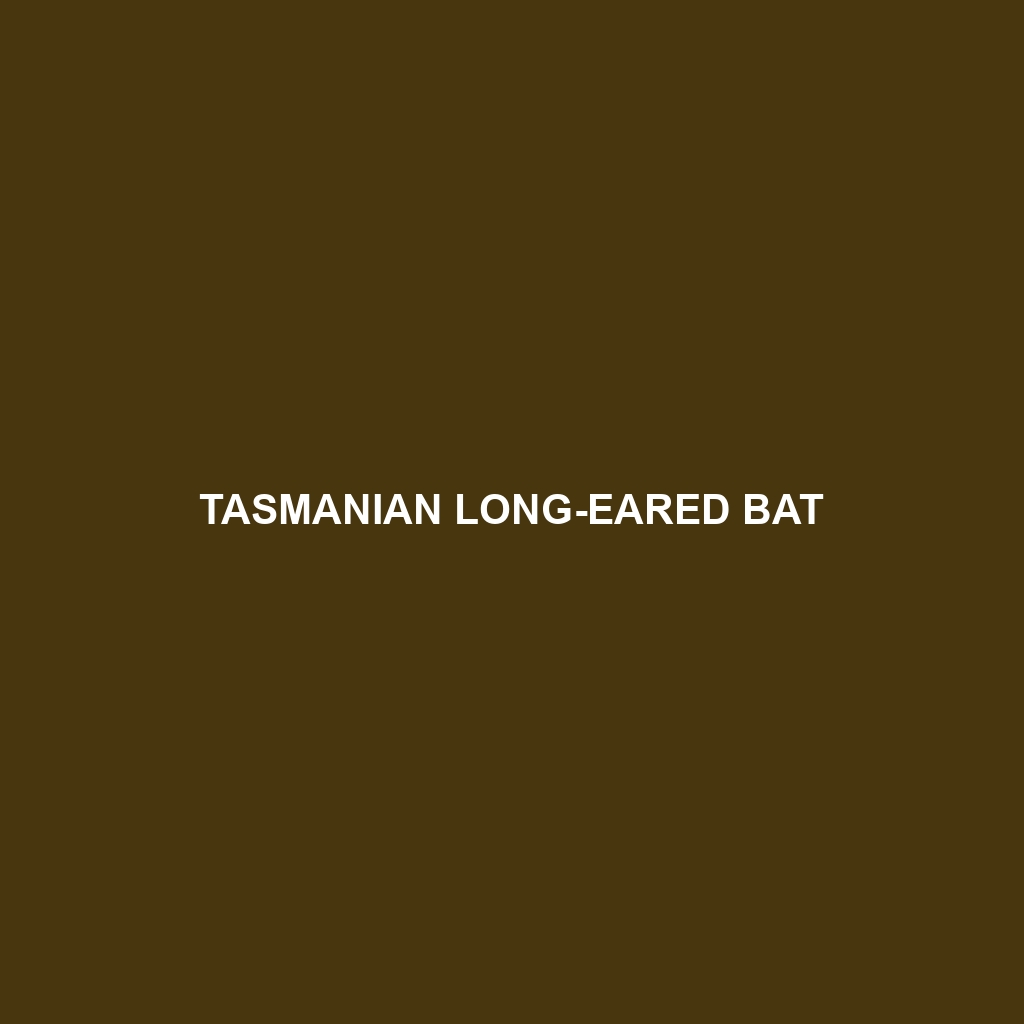Tasmanian Long-eared Bat
Common Name: Tasmanian Long-eared Bat
Scientific Name: Plecotus tasmaniensis
Habitat
The Tasmanian Long-eared Bat is primarily found in Tasmania, Australia, particularly in forested areas, including eucalyptus and temperate rainforests. This species prefers habitats with dense foliage that provide ample roosting opportunities and hunting grounds. It is often spotted in woodlands, coastal scrub, and near water bodies where its insect prey is abundant.
Physical Characteristics
Tasmanian Long-eared Bats are medium-sized bats, typically weighing between 8 to 15 grams. They possess long ears, measuring around 4 cm, which are key to their echolocation abilities. The fur is generally a mix of brown and gray, with a lighter underbelly. Their distinctive features include a long, flat head and shorter wings compared to other bat species, making them unique in appearance.
Behavior
These bats are nocturnal and exhibit a range of behaviors that include social roosting in small colonies. They are known for their agile flight patterns as they hunt for insects, primarily moths and beetles. Tasmanian Long-eared Bats display a remarkable ability to locate prey using their keen sense of hearing, aided by their elongated ears. Mating behaviors are observed during the warmer months, while they engage in torpor to conserve energy during colder seasons.
Diet
The diet of the Tasmanian Long-eared Bat mainly consists of insects, including a variety of moths, beetles, and other small invertebrates. They actively forage in the forest canopy at night, utilizing their echolocation skills to detect prey in the dark. This species plays a vital role in controlling insect populations, contributing to ecosystem health.
Reproduction
Reproductive activity in Tasmanian Long-eared Bats occurs during late spring to early summer. Females typically give birth to one pup per year after a gestation period of about 6 weeks. The young are born hairless and dependent on their mothers for warmth and nourishment. Weaning occurs around 6 to 8 weeks post-birth, after which the pups begin to learn to fly and forage alongside their mothers.
Conservation Status
The Tasmanian Long-eared Bat is currently classified as vulnerable on the IUCN Red List. Threats to this species include habitat destruction, climate change, and competition from invasive species. Conservation efforts are crucial to ensure their survival and to protect their natural habitats from further degradation.
Interesting Facts
– The Tasmanian Long-eared Bat is known for its exceptional hearing abilities, which allow it to detect prey from long distances.
– They can live up to 12 years in the wild, which is relatively long for bat species.
– This species has a unique mating ritual that includes intricate flight patterns and vocalizations during the breeding season.
Role in Ecosystem
Tasmanian Long-eared Bats play a significant role in their ecosystem by acting as natural pest controllers, helping to maintain a balance in insect populations. Their predation on various insects supports the health of forest ecosystems and promotes biodiversity. Furthermore, as prey for various predators, they contribute to the food web in their habitat.
